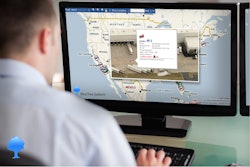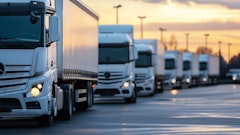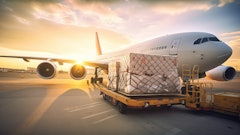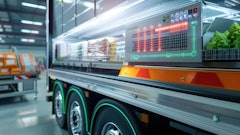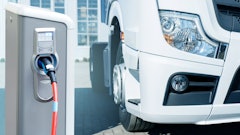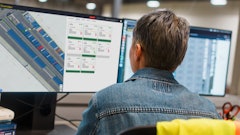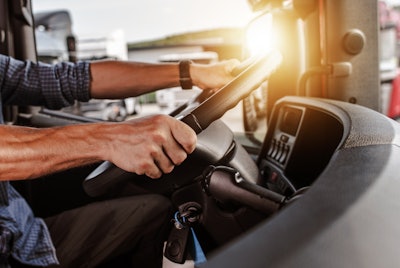
Food is one of the most challenging products to move when it comes to haulage. There are three key challenges which companies moving food around the U.S are facing in 2019. These challenges are driver shortages, environmental impacts and sanitation standards compliance. To meet these challenges, companies are changing their traditional practices and employing new solutions.
Driver Shortages
Despite the clear need for workers, companies looking for long-haul drivers are struggling to fill the positions. Higher levels of demand for freight along with issues of high turnover rates and retirements have made historical problems even worse.
Log in to view the full article
Food is one of the most challenging products to move when it comes to haulage. There are three key challenges which companies moving food around the U.S are facing in 2019. These challenges are driver shortages, environmental impacts and sanitation standards compliance. To meet these challenges, companies are changing their traditional practices and employing new solutions.
Driver Shortages
Despite the clear need for workers, companies looking for long-haul drivers are struggling to fill the positions. Higher levels of demand for freight along with issues of high turnover rates and retirements have made historical problems even worse.
Figures provided by the American Trucking Associations (ATA) estimate that companies could require about 100,000 more drivers in the coming years. To fill these positions trucking companies are doing more to fill the gaps in their workforce. Recruitment of drivers from non-traditional truck driver backgrounds, along with raising pay and making the job less stressful are ways in which companies are hoping to attract new workers.
An average driver salary of $60,000 marks an increase, but there are still issues that drivers face which is making the job a tough sell to potential workers. For women, who still make up a tiny portion of truck drivers in the U.S. (6.2 percent according to the ATA), they face some serious issues working in the trucking industry. For example, sexual harassment, sexism, personal safety and personal hygiene to name just a few.
Women in Trucking asked women in the industry to rate their safety out of 10 with the average response being 4.4. However, when it comes to safety on the road women are a safer option for companies as experts believe they take fewer risks when driving.
Filling the gaps in the driver market is crucial for companies going forward and expanding the range of people employed will not only improve the efficiency of companies but also the working conditions of all those involved.
Environmental Impacts
With consumers desiring more fresh food produced organically and sustainably, the environmental impacts of transporting food are becoming more and more critical. Transporting food by long-haul trucking is common in the U.S. and the range of food moved across the country in trucks is large.
The farm-to-table trend in restaurants has also impacted the public’s desire to eat locally produced food. It is, however, not always possible for consumers to source all of their food locally. As a result, transporting the goods as environmentally friendly as possible is becoming more important for both consumers and businesses. One system which is helping improve the transportation of food is vehicle tracking.
Vehicle tracking allows specific vehicles within a fleet to be closely monitored for a range of parameters which can play a vital role in the efficiency of a vehicle. Driver behaviour can have a significant impact on the efficiency of a vehicle. Considering the tight cost margins with food, making sure that from a transportation standpoint expenses are as low as possible is a benefit to both consumers and businesses.
One system which has proven to improve both driver behaviour and the efficiency of a vehicle is in-cab coaching systems. These are small, dashboard-mounted devices which can provide both audio and visual feedback to drivers based on their performance behind the wheel. Drivers are alerted to dangerous actions such as harsh acceleration or speeding and can instantly correct their behaviour. These corrections can have a significant impact on areas such as vehicle maintenance and fuel usage, both of which can improve the overall efficiency of a vehicle. Savings made on fuel usage not only benefit the company through reduced fuel costs but also improve the impact on the environment which is essential for consumers.
Considering that long-haul truck drivers are often paid by the mile, rather than by the hour, vehicle tracking can aid this process. The systems produce highly accurate telematics data which can be analyzed by fleet managers to see exactly how many miles drivers have covered.
It’s clear that the appetite for farm-to-table food and consumers’ desire for locally sourced produce, along with consumer awareness of the environmental impact of transporting food is only going to increase. As such, systems which improve the efficiency of transporting food will be more important in the coming years.
Keeping Food Fresh and Safe In Transit
Transporting food from where it is produced to where it will be sold can present some key challenges. It is vitally important to get this right as the health of customers is crucial. Getting food to its destination quickly and safely requires planning and vehicles capable of sustaining specific transportation temperatures.
When consumers are browsing the shelves in a store, the freshness of fruit and vegetables are a crucial factor in determining if the item is purchased or left on the shelf. The temperature of the vehicles transporting produce must be carefully controlled to keep fruit and vegetables looking fresh.
Keeping food at the correct transporting temperature is challenging because of the variations in temperature for transporting different fruits and vegetables. Temperature is not a one-size-fits-all parameter. At the lower end of the temperature scale, such produce as blueberries, broccoli, apples, grapes, peaches, strawberries and packed salad greens can be transported safely at between 32-degrees to 36-degrees Fahrenheit. However, these temperatures are in total contrast to those needed to transport products such as potatoes, bananas, tomatoes and grapefruit from the warm climates of Arizona and California, which requires 55-degree to-60-degree containers.
Being able to regulate and monitor the temperature of the containers during transport is vital as drivers may be required to alter the temperature of their trailer should it get out of the ideal range. Even a slight change in temperature can have significant effects on the quality of the product, which can have serious knock-on effects for suppliers and consumers.
Systems are now available which offer real-time temperature tracking which warns the driver about temperatures getting too high. Furthermore, automatic re-adjustments are made inside the refrigerated vehicle or trailer to ensure the food stays at the correct temperature. Data is also produced continuously to provide clear evidence to show the temperature of the trailer or vehicle throughout the journey.
Finally, there are legal requirements for transporting food to maintain food safety and prevent illness to consumers. In America, these requirements are set out by the FDA’s Food Safety Modernization Act (FSMA).
Making sure that the shipment arrives on time is another crucial aspect of maintaining the sanitation and freshness of produce. As with temperature, even small delays can have a significant impact.
Delays in transportation can significantly reduce the available shelf life of fresh produce which can often be off-putting to customers who see a short use-by date on the product. Since some of the food’s shelf life is taken up in transportation time, getting the product to its final destination as quickly as possible is very important.
Overall, the transportation of food is challenging, but with the solutions already in place and new ones being introduced, food haulage can continue to meet the needs of consumers.
Thomas Goodall, a recent graduate of Newscastle University, has contributed work to a variety of publications for a range of topics, including vehicle technology and advancements in sustainability.







